Pterocarpus indicus Willd.
| Etymology | Genus | Wing (Ptero) fruit (carpus) |
|---|---|---|
| Species | After India, though this tree is not native to it | |
| Family | Fabaceae | |
| Synonyms | Pterocarpus carolinensis Kaneh., Lingoum echinatum (Pers.) Kuntze | |
| Common Names | Angsana, Burmese Rosewood | |
| Status | Exotic: Casual | |
| Form | Tree | |
| Native Distribution | Peninsular Malaysia, Borneo, Phillippines, New Guinea, Myanmar | |
Diagnostics:
Pterocarpus indicus, a cultivated tree, has numerous obvious characteristics. The branches are drooping and extended, created a distinct appearance of the foliage from afar. A mature tree has buttress roots and light brown bark that has flaking longitudinal strips. The leaflets are frequently infected with brownish wounds. Lastly, the fruits are winged and circular.
Interesting Facts:
The Angsana tree has a long history in Singapore's urban greening efforts (Wee & Corlett, 1986; Auger, 2013). Once extensively planted from Peninsular Malaysia down to Singapore, a fungal disease infected the trees in Malacca at 1885, and subsequently spread down south to Singapore in 1914. Fungicide treatment and tree felling were done to contain the disease but the efforts were in vain.After the launch of the Garden's City campagin in 1967, many stem-cuttings of the Angsana were made and cultivated as "instant trees" (Wee & Corlett, 1986); so much so that in 1988, it was the 7th most commonly cultivated tree in Singapore, with 16,311 individuals (The Straits Times, 1988). However, its branches are prone to breakage. This is because of the growth of adventitious roots that sometimes penetrate into the pollarded cavities thus weakening the branches.
Presently, the Angsana is not actively cultivated anymore, but a large number of huge mature specimens are still found around the island.
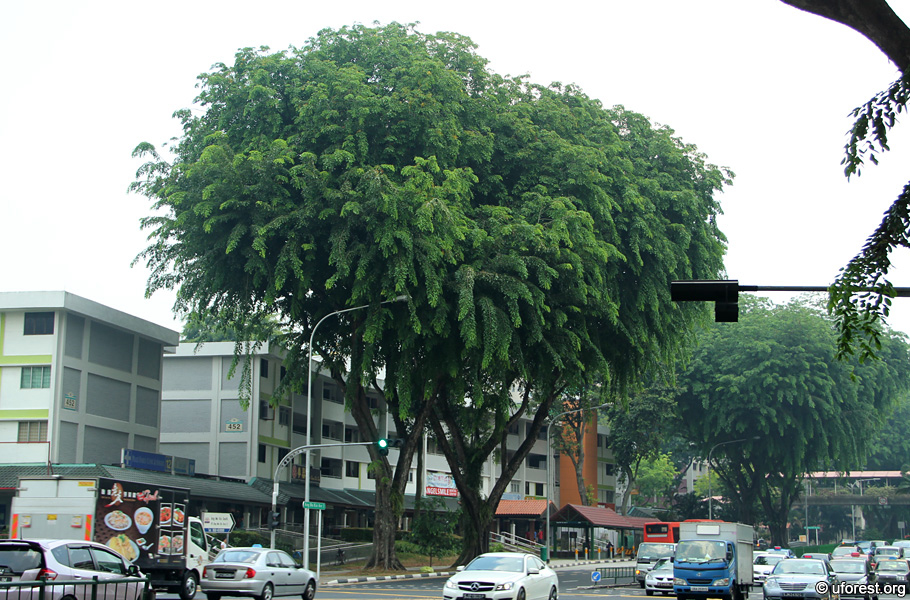
The Angsana tree has a distinctive foliage of drooping branches.
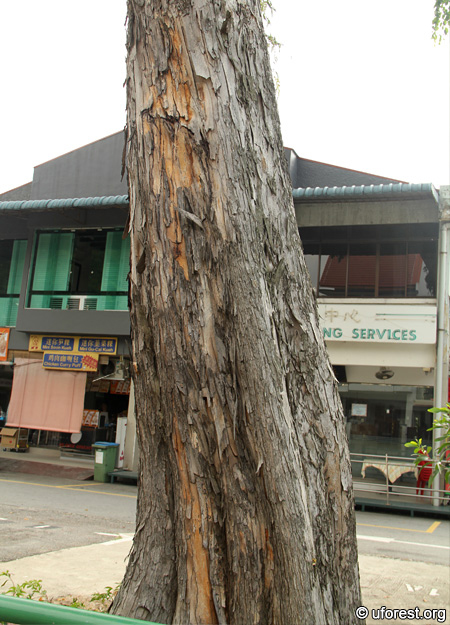
Flaking longitudinal strips of bark.
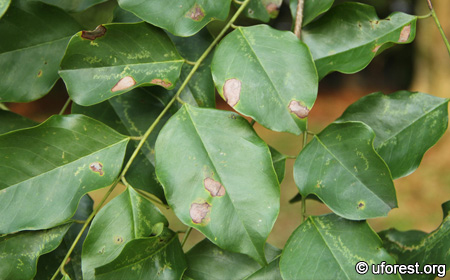
The leaflets frequently have brown wounds.
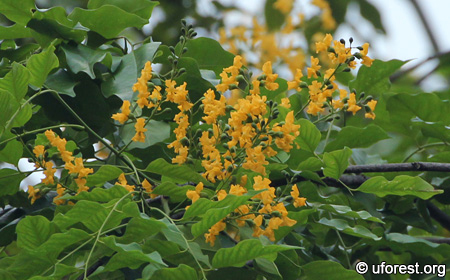
Yellow flowers.
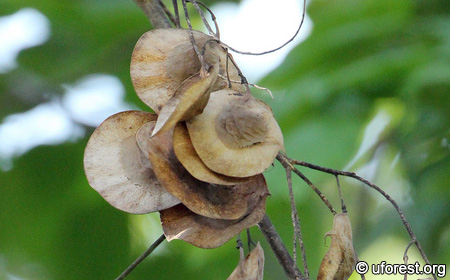
Characteristic circular winged fruits.
References
Auger T. (2013) Living in a Garden: The Greening of Singapore. National Parks Board, Singapore. 200 pp.Wee YC & R Corlett. (1986) The City and The Forest. Plant Life in Urban Singapore. National University of Singapore Press, Singapore. 186 pp.
The Straits Times. (1988) The top fifteen trees. The Straits Times, Singapore. 19-Oct-1988.
Author: Siyang
Posted: 2013-07-04 / Modified: 2017-12-25
Google Ads